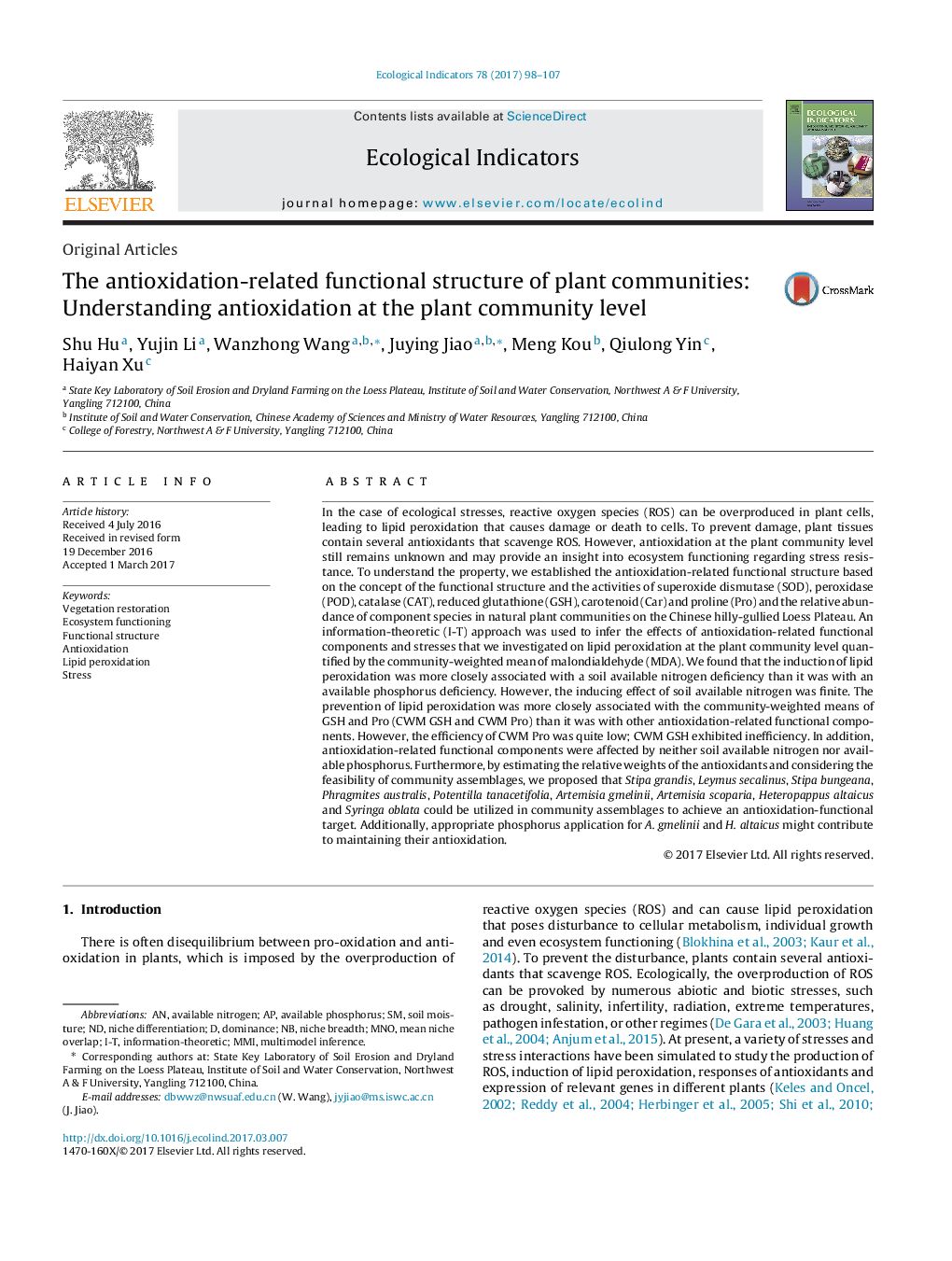| کد مقاله | کد نشریه | سال انتشار | مقاله انگلیسی | نسخه تمام متن |
|---|---|---|---|---|
| 5741617 | 1617124 | 2017 | 10 صفحه PDF | دانلود رایگان |
عنوان انگلیسی مقاله ISI
The antioxidation-related functional structure of plant communities: Understanding antioxidation at the plant community level
ترجمه فارسی عنوان
ساختار عملکردی مرتبط با آنتی اکسیدانی جوامع گیاهی: درک سطح آنتی اکسیدانی در سطح جامعه گیاه
دانلود مقاله + سفارش ترجمه
دانلود مقاله ISI انگلیسی
رایگان برای ایرانیان
کلمات کلیدی
موضوعات مرتبط
علوم زیستی و بیوفناوری
علوم کشاورزی و بیولوژیک
بوم شناسی، تکامل، رفتار و سامانه شناسی
چکیده انگلیسی
In the case of ecological stresses, reactive oxygen species (ROS) can be overproduced in plant cells, leading to lipid peroxidation that causes damage or death to cells. To prevent damage, plant tissues contain several antioxidants that scavenge ROS. However, antioxidation at the plant community level still remains unknown and may provide an insight into ecosystem functioning regarding stress resistance. To understand the property, we established the antioxidation-related functional structure based on the concept of the functional structure and the activities of superoxide dismutase (SOD), peroxidase (POD), catalase (CAT), reduced glutathione (GSH), carotenoid (Car) and proline (Pro) and the relative abundance of component species in natural plant communities on the Chinese hilly-gullied Loess Plateau. An information-theoretic (I-T) approach was used to infer the effects of antioxidation-related functional components and stresses that we investigated on lipid peroxidation at the plant community level quantified by the community-weighted mean of malondialdehyde (MDA). We found that the induction of lipid peroxidation was more closely associated with a soil available nitrogen deficiency than it was with an available phosphorus deficiency. However, the inducing effect of soil available nitrogen was finite. The prevention of lipid peroxidation was more closely associated with the community-weighted means of GSH and Pro (CWM GSH and CWM Pro) than it was with other antioxidation-related functional components. However, the efficiency of CWM Pro was quite low; CWM GSH exhibited inefficiency. In addition, antioxidation-related functional components were affected by neither soil available nitrogen nor available phosphorus. Furthermore, by estimating the relative weights of the antioxidants and considering the feasibility of community assemblages, we proposed that Stipa grandis, Leymus secalinus, Stipa bungeana, Phragmites australis, Potentilla tanacetifolia, Artemisia gmelinii, Artemisia scoparia, Heteropappus altaicus and Syringa oblata could be utilized in community assemblages to achieve an antioxidation-functional target. Additionally, appropriate phosphorus application for A. gmelinii and H. altaicus might contribute to maintaining their antioxidation.
ناشر
Database: Elsevier - ScienceDirect (ساینس دایرکت)
Journal: Ecological Indicators - Volume 78, July 2017, Pages 98-107
Journal: Ecological Indicators - Volume 78, July 2017, Pages 98-107
نویسندگان
Shu Hu, Yujin Li, Wanzhong Wang, Juying Jiao, Meng Kou, Qiulong Yin, Haiyan Xu,
